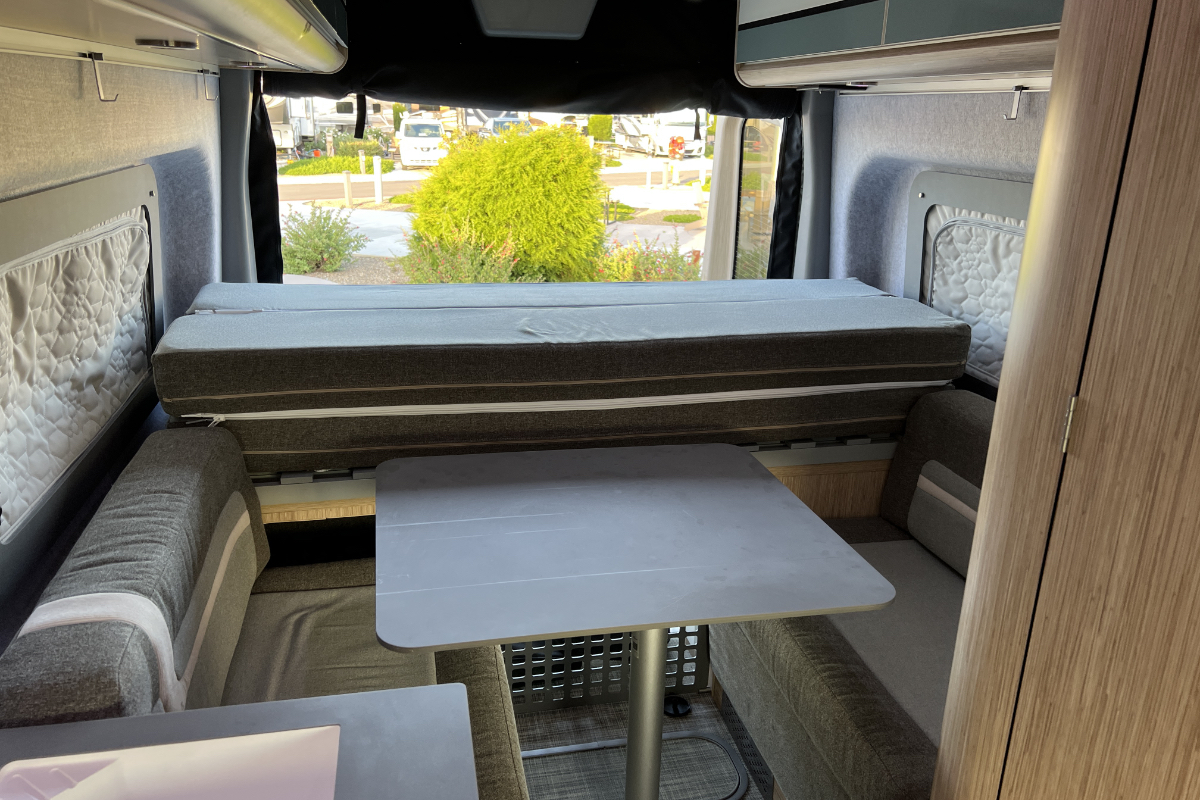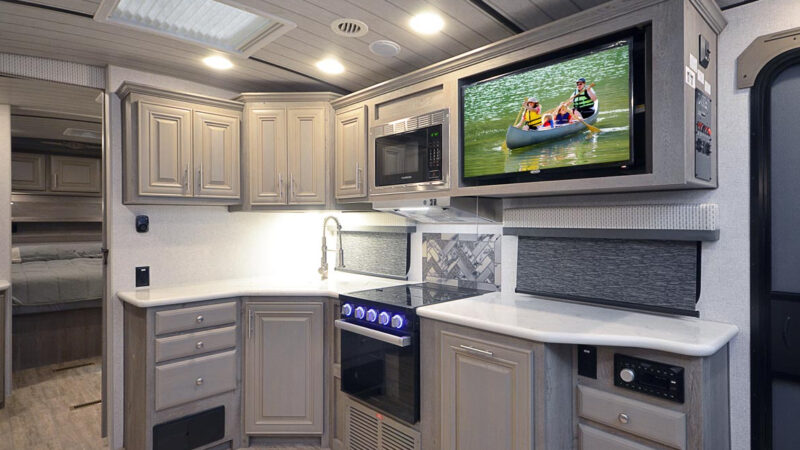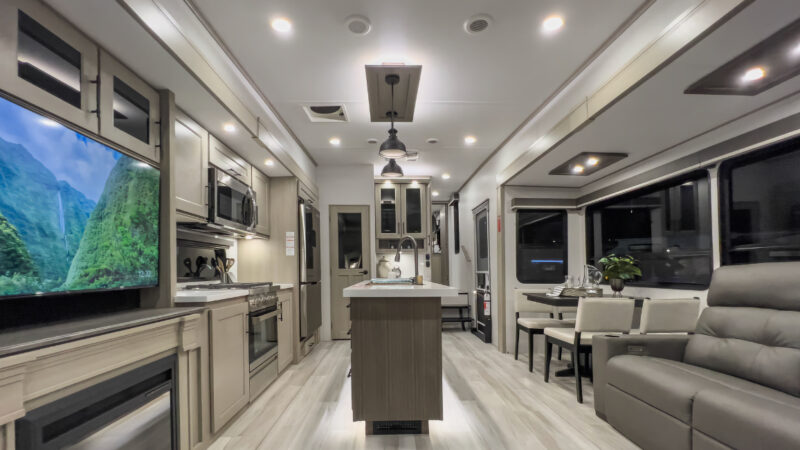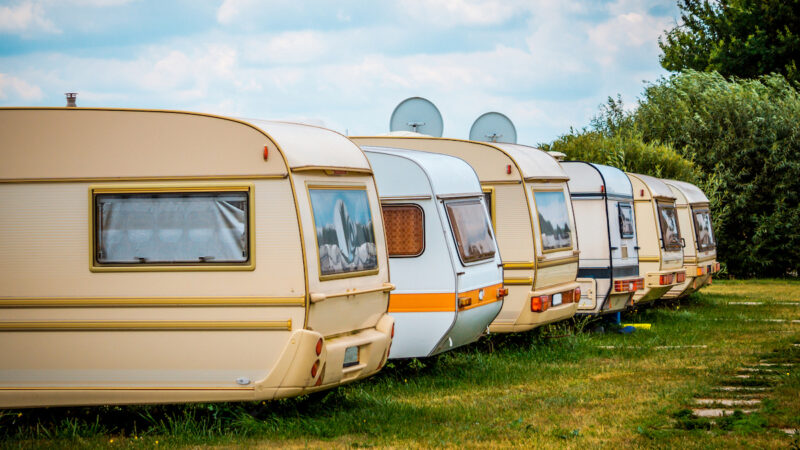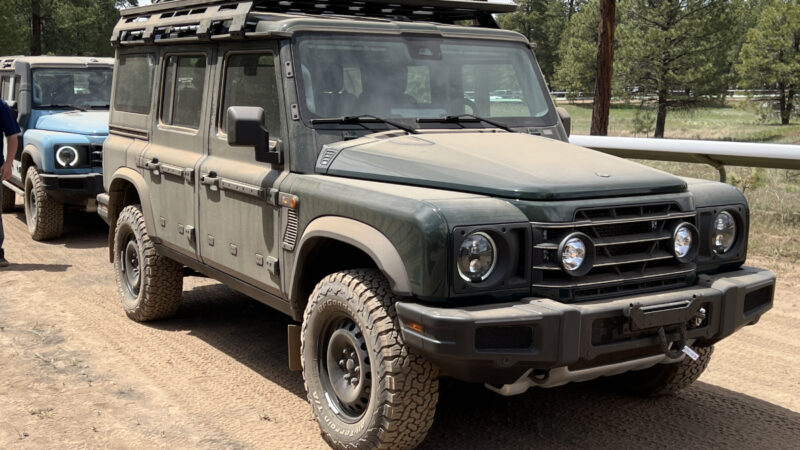exclusive: Taking the Winnebago eRV2 for a Test Drive
At the Florida RV SuperShow in Tampa this past January, Winnebago grabbed headlines by unveiling its second-generation electric camper van prototype. Dubbed the eRV2, this Class B model garnered plenty of media attention as it provided a glimpse of the future for all-electric RVs.
At the time, Winnebago was quick to point out that the eRV2 is a prototype without any clear timeline for when it could go into production. But the company has spent the past few months putting the vehicle through its paces, including racking up over 18,000 miles of testing out on the road. That has proved invaluable for collecting data on the van’s performance and discovering ways that future versions could be tweaked and improved.
Recently, we had the chance to spend a few days driving and camping in the eRV2. We found it to be a unique product with tremendous potential despite having a few rough edges that come with a pre-production model. Is it the future of RVing? That remains to be seen. But it is an exciting vehicle that just might change how we travel and camp.
Here’s what we learned after our time with the electric Winnebago camper van.
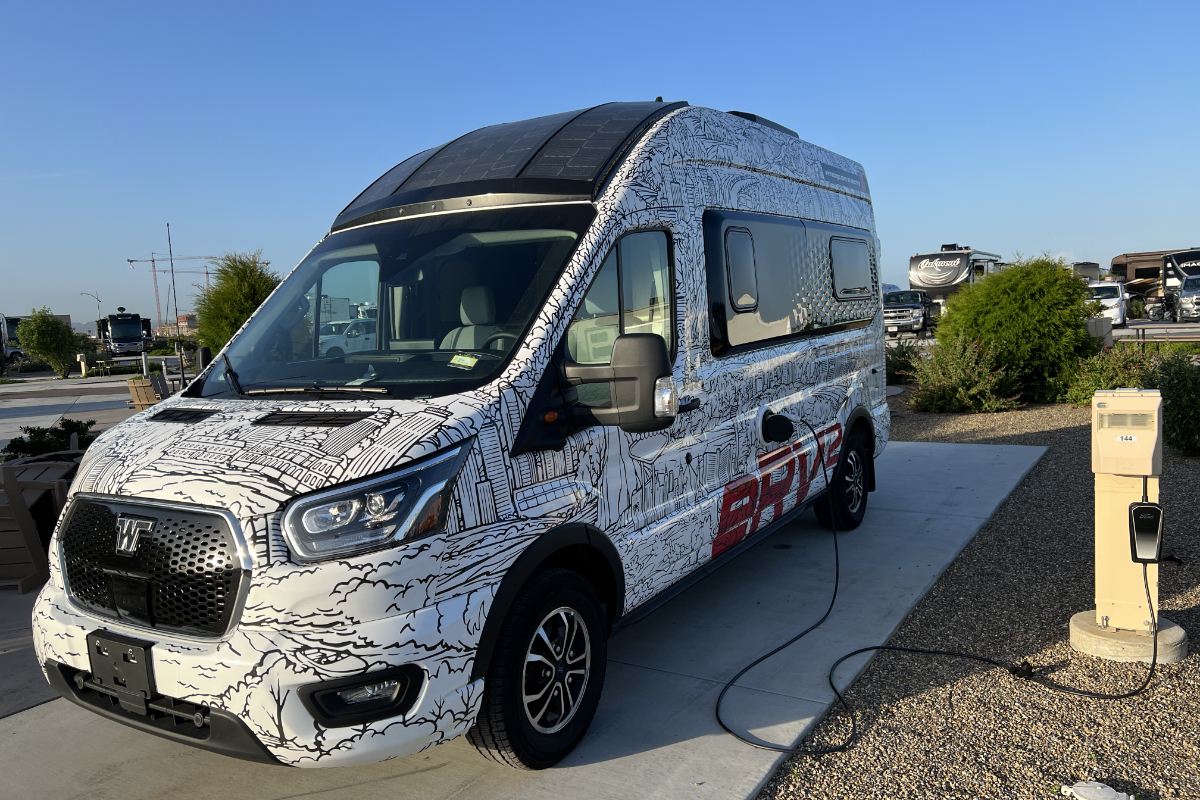
Photo Credit: Kraig Becker
What is the eRV2?
Built on the Ford E-Transit platform, the Winnebago eRV2 is an all-electric Class B camper van. It has an estimated range of 108 miles on a single charge and can camp off-grid for up to seven days. The vehicle sleeps two and has an onboard bathroom with a cassette toilet and shower, as well as a small kitchenette with a sink and single-burner induction cooktop.
Other features include 500 watts of roof-mounted solar panels and a 15-kilowatt-hour 48V lithium house battery system that charges independently of the battery that powers the drivetrain. The van comes with a 35-gallon freshwater reservoir, a 30-gallon gray water tank, an onboard water heater, and a 48V air conditioning system. A removable table provides space for meals, remote work, or socializing, while the foldout bed transforms into a lounge as needed.
The exterior of the eRV2 prototype features an eye-catching black and white wrap with graphics meant to inspire travel and adventure. That paint scheme is somewhat divisive, with some people loving it and others finding it a bit too busy. Either way, it does draw plenty of attention to the vehicle, both on the road and at the campground. Whether or not these graphics make it into the production model remains to be seen, but expect more traditional colors for future consumer models.

Photo Credit: Kraig Becker
Driving the eRV2
We spent three days test-driving the eRV2 on busy city streets, congested highways, and narrow country roads. Over that time, we concluded that the camper van offers an unremarkable driving experience—in the best possible way.
If you’ve driven a Class B model before, you’ll know what to expect when sliding behind the wheel of the eRV2. It is a bit ponderous maneuvering in and out of traffic and on narrow side streets, but the vehicle’s heavy battery packs do shift the center of gravity to a degree, improving stability and balance as a result. The additional weight also helps smooth out the ride, but for the most part, it feels a lot like a traditional camper van.
Unlike many EVs, Winnebago’s prototype doesn’t leverage its electric drivetrain to produce crazy acceleration and torque. Instead, it picks up speed in a nice, steady manner with plenty of power available when needed. The vehicle’s regenerative braking system feels slightly different initially, slowing the van automatically when you let off on the accelerator. But RVers will adapt quickly and may even adopt a one-pedal driving process, rarely touching the brake pedal at all.
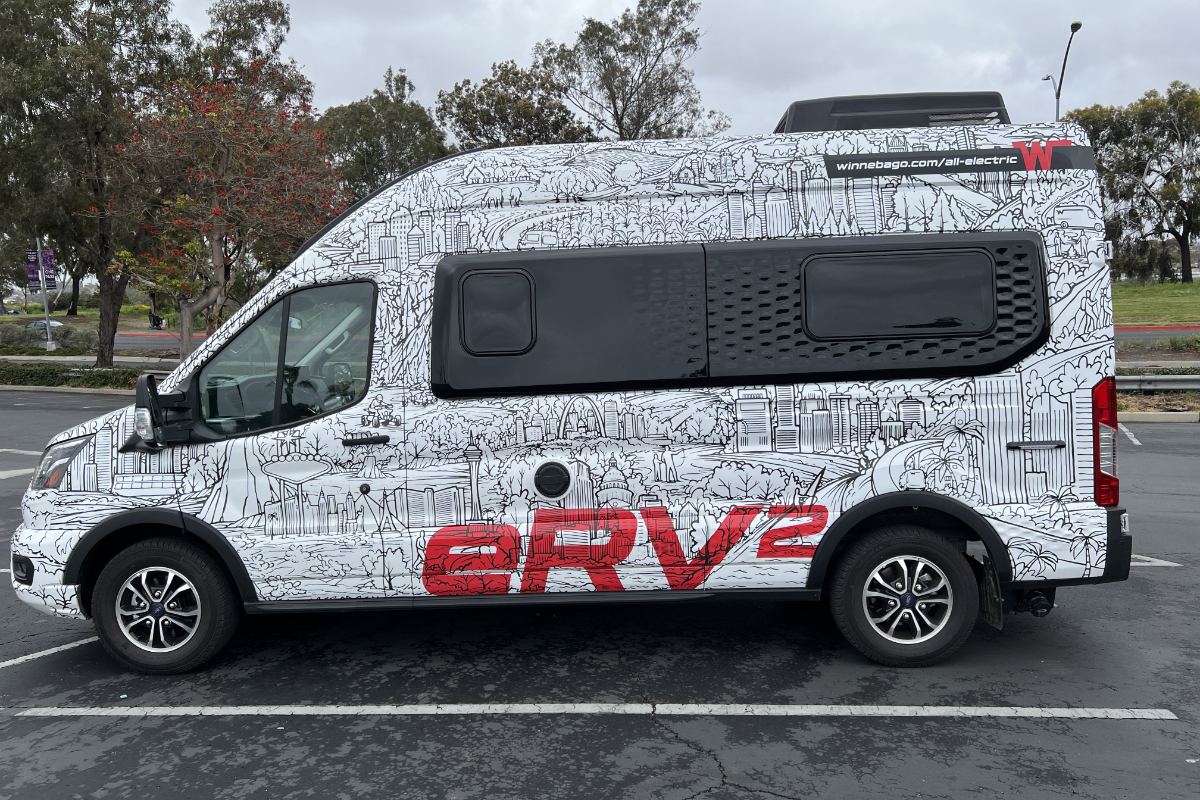
Photo Credit: Kraig Becker
Testing the Range
Since the eRV2 was first announced, the biggest question mark surrounding the vehicle has been its range. As noted above, the camper van can travel an estimated 108 miles between charges, although that number varies greatly depending on driving conditions and style. If drivers go easy on the accelerator and maintain speeds of 60-65 mph on the highway, they’ll find the battery holds a charge longer. But drive a bit more aggressively, and the range will drop accordingly.
Long steady climbs and descents will also impact the range of the eRV2. Going up steep hills or mountains zaps battery life surprisingly quickly, dramatically reducing how far the RV can travel. The good news is the van’s regenerative braking system works very well, recouping energy when descending and adding miles back to the range. On one test run, we saw our range drop from 70 miles to about 50 miles while driving up steep hills. But when we turned around to head back down, we saw the range climb to 75 miles, effectively increasing our driving distance.
That said, Winnebago understands that a production model of the eRV2 needs to have a longer and more reliable range. Right now, the 108-mile limit is mainly due to the constraints of the E-Transit platform. However, Ford is working on a version with an improved range and is expected to reveal that version later this year.
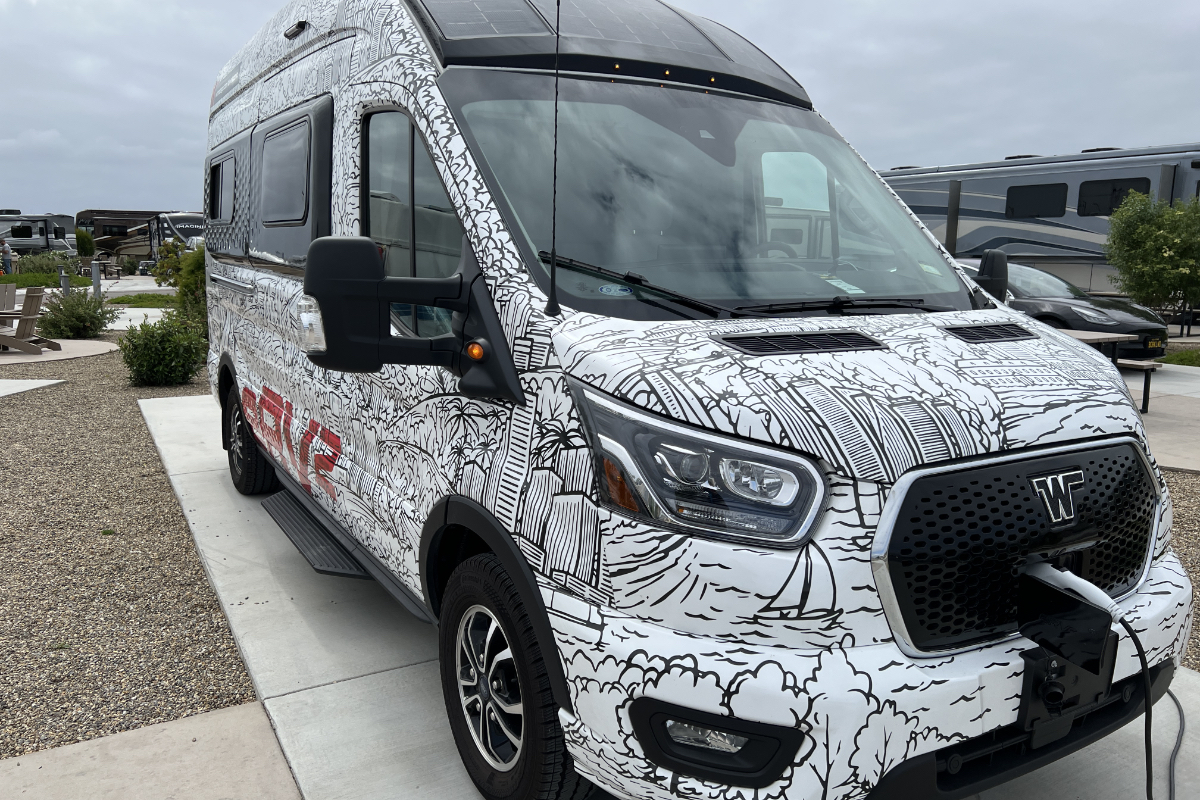
Photo Credit: Kraig Becker
Charging the eRV2
Like any EV, Winnebago’s electric camper van can charge its batteries at home or a public charging station. But unlike other models, it can also recharge using 30-amp shore power at a campground. While this isn’t as fast as a dedicated Level 3 charger, it is incredibly convenient, ensuring you are always fully charged when leaving your campsite.
During our test drive, we usually drove the eRV2 throughout the day, then returned to our campsite at Sun Outdoors San Diego Bay to park for the night. When plugged into the power pole, our vehicle’s batteries recharged overnight and were always ready to go the following day. It is hard to overstate how nice it was to wake up to a “full tank” and a vehicle that was ready to go on our next adventure.
Still, in order to get the full eRV2 experience, we stopped at a couple of public charging stations to see how the vehicle fared. Our first attempt was in a crowded parking lot which made it challenging to maneuver the van into place. Once we managed to do that, the front-mounted charging port was easily accessible, and the process went off without a hitch. Later, at a larger and more open charging station, we were able to pull in and out without a problem. Both stops were quick, as we didn’t need much of a charge either time, but Winnebago says the van can recharge in about 25-30 minutes, depending on your current battery level and the speed of the charger.
Utilizing Ford’s proprietary technology, the eRV2 can wirelessly communicate with charging stations operated by Electrify America. This facilitates wireless payments and relays information such as the charger’s status and estimated charging speeds. This is another very convenient feature that helps simplify the process, allowing owners to connect quickly and easily. It also worked exactly as expected, ensuring a smooth experience at locations equipped with the service.
During our few days with the eRV2, charging was an uneventful and mundane affair. Still, the charging infrastructure needs to expand in more parts of the country to improve the experience for all EV owners. This isn’t an issue for Winnebago to solve, but new stations are being built at a rapid pace. Hopefully, when a production eRV becomes available, this will be less of a concern, and charging options will be nearly as ubiquitous as gas stations.
Camping in the eRV2
Of course, our experience with the eRV2 wasn’t just about driving it around to different charging stations and trailheads. This is an RV, after all, so we were also interested in how it performed at the campsite. No one is considering buying a vehicle like this to use as a daily commuter, but they will want to sleep, eat, and relax in it as much as possible.
Once again, if you’ve ever camped in a Class B motorhome, you probably know what to expect here—at least in terms of size and configuration. With the eRV2, Winnebago managed to squeeze plenty of functionality and convenience into a small floorplan. The vehicle has a foldout bed, a dinette, an onboard bathroom, and a small kitchen area. You’ll also find ample storage, with cabinets, cubbies, and drawers throughout.
The layout actually works well once you become accustomed to the space and how everything functions. During my first night, I floundered about while setting up and taking down the removable dinner table and configuring the bed. But by day two, everything went much smoother, and I found I could reconfigure the space as needed in a matter of just a few minutes.
Other than a 12V mini-fridge and a portable single-burner induction stove, the eRV doesn’t have much in the way of appliances. But thanks to a surprising amount of countertop space, it was easy to prepare meals in the vehicle. There is even a foldout table just outside the sliding side door, which was handy when I wanted to prepare dinner outdoors. The nearby dinette easily seats two adults, but any more than that would start to get a little crowded.
The eRV2’s shower was a pleasant surprise, offering more space than expected. While it isn’t large by Class A standards, it does provide a comfortable amount of space without inducing claustrophobia. The onboard water heater warms up quickly, too, saving time and water in the process.
All in all, the camping experience in the eRV2 was a good one, with one minor exception. As someone who is over 6’2″ tall, the bed wasn’t quite long enough to completely accommodate me. The mattress was very supportive and comfortable, but I had to sleep at an angle in order to keep my feet from dangling off the end and pressing up against a sidewall. Two tall campers might struggle to get a good night’s sleep due to the lack of space, but hopefully, a different floorplan can turn the bed north-south to accommodate a larger bed.
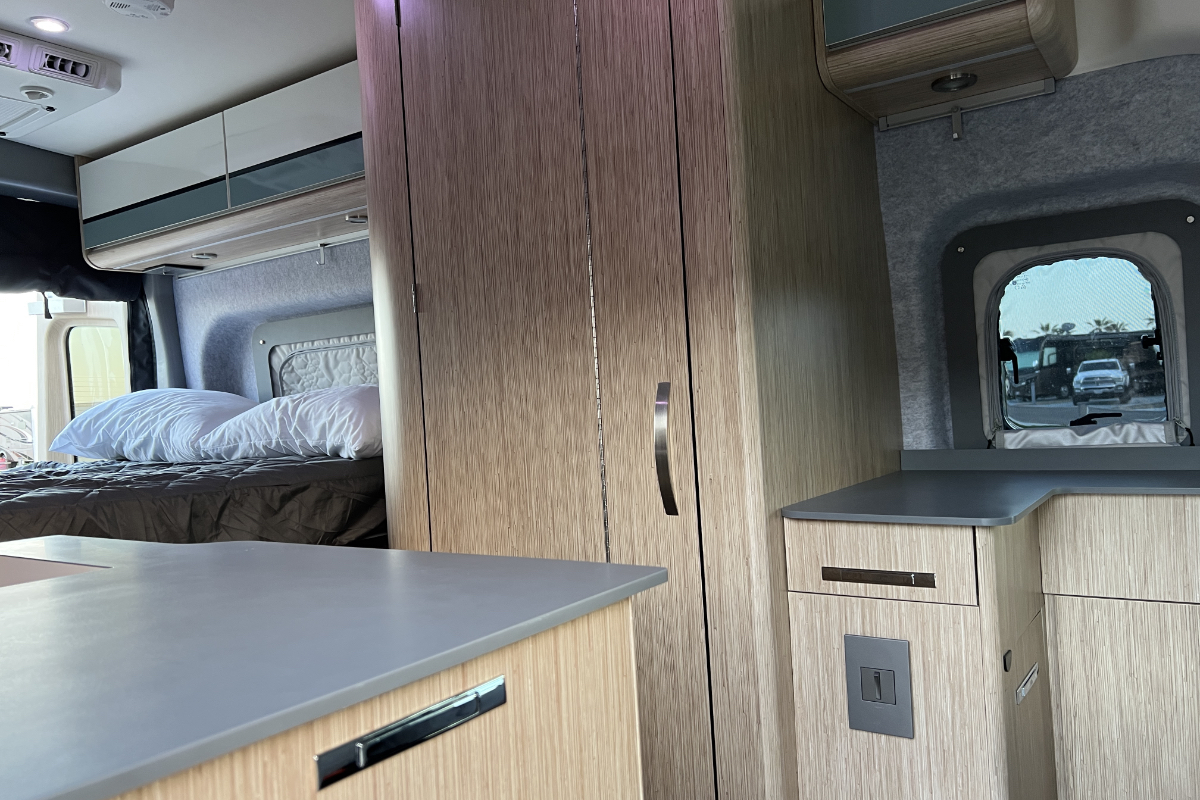
Photo Credit: Kraig Becker
Working in the eRV2
Many RVers use their rigs to work from the road these days, so we were eager to see how the eRV2 performed as a remote office. With the table installed in the dinette, that part of the camper made an excellent workspace, with a reasonable amount of surface area and access to plenty of charging ports. There is even enough space for two people to work in a pinch, although it could get a little crowded sometimes.
A second workstation is found in the front of the vehicle just aft of the cockpit. Both the driver and passenger seats rotate 180º, allowing them to face the interior of the cabin. A foldout table behind the driver’s chair locks into place, creating another space for a remote worker to operate. And while it is also within easy reach of several power ports, it doesn’t offer as much surface area as the table in the dinette. However, it has the advantage of having a more comfortable and adjustable seat, which is why I frequently found myself working there.
Winnebago included a 4G/Wi-Fi signal booster in the eRV2, which should provide a better internet connection for streaming video and working. We didn’t get the chance to test that system during our time with the vehicle but expect performance on par with similar boosters installed on other motorhomes.
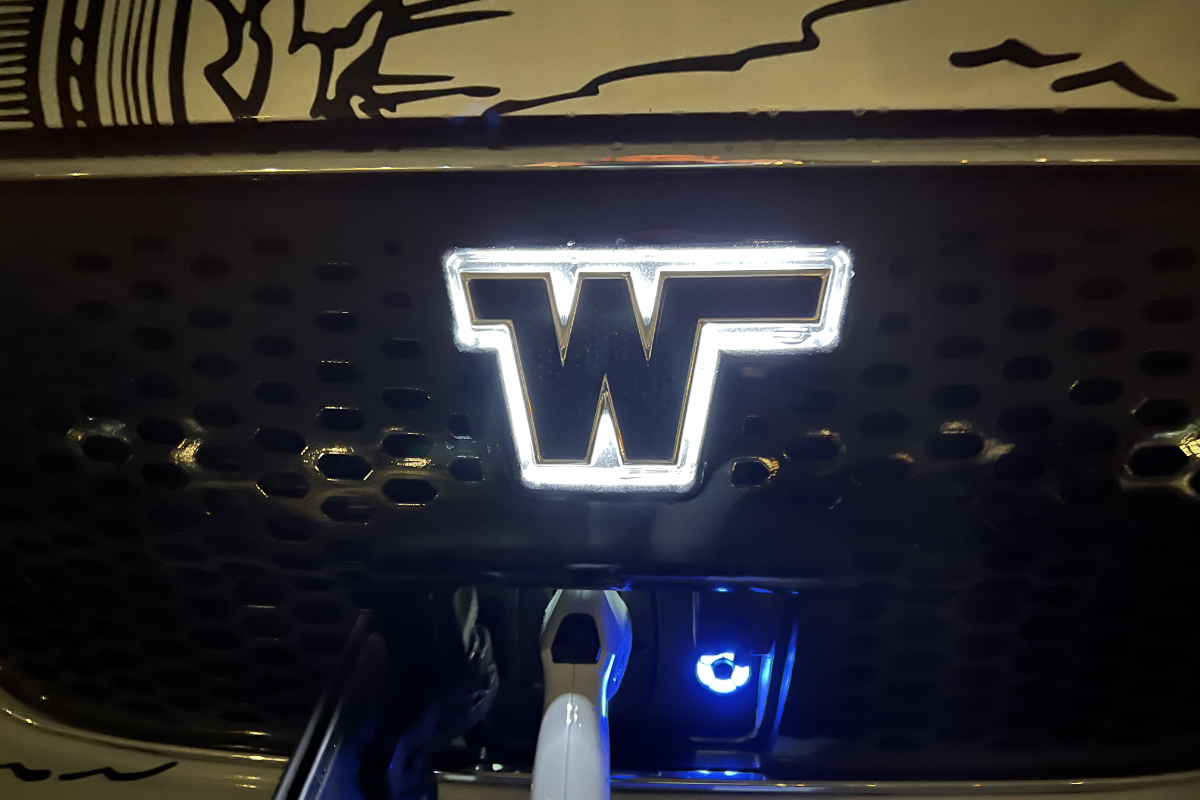
Photo Credit: Kraig Becker
Winnebago Connect
The eRV2 is unlike any other RV ever created, so Winnebago has added some new features to take advantage of its high-tech components. One of those features is Winnebago Connect, a proprietary interface for controlling the vehicle’s onboard systems, including lights, climate control, holding tanks, and more.
Owners interact with these items through either a built-in touchscreen or an app on their smartphone. Both offer an intuitive, easy-to-understand interface that can be used to activate the water heater, adjust the air conditioner’s temperature, or monitor water levels in the fresh and gray water tanks. The system also displays current charge levels for both the drivetrain and the house batteries and how quickly either of those power banks is charging.
Winnebago Connect also gives you complete control over the eRV2’s interior lights, which is handy when you’re snuggled in bed and don’t want to get up to flip the switch. You can even adjust the color and brightness of those lights and save your settings as a preset for easy access later. This minor—but fun—feature went a long way toward creating a comfortable and relaxing environment inside the van.
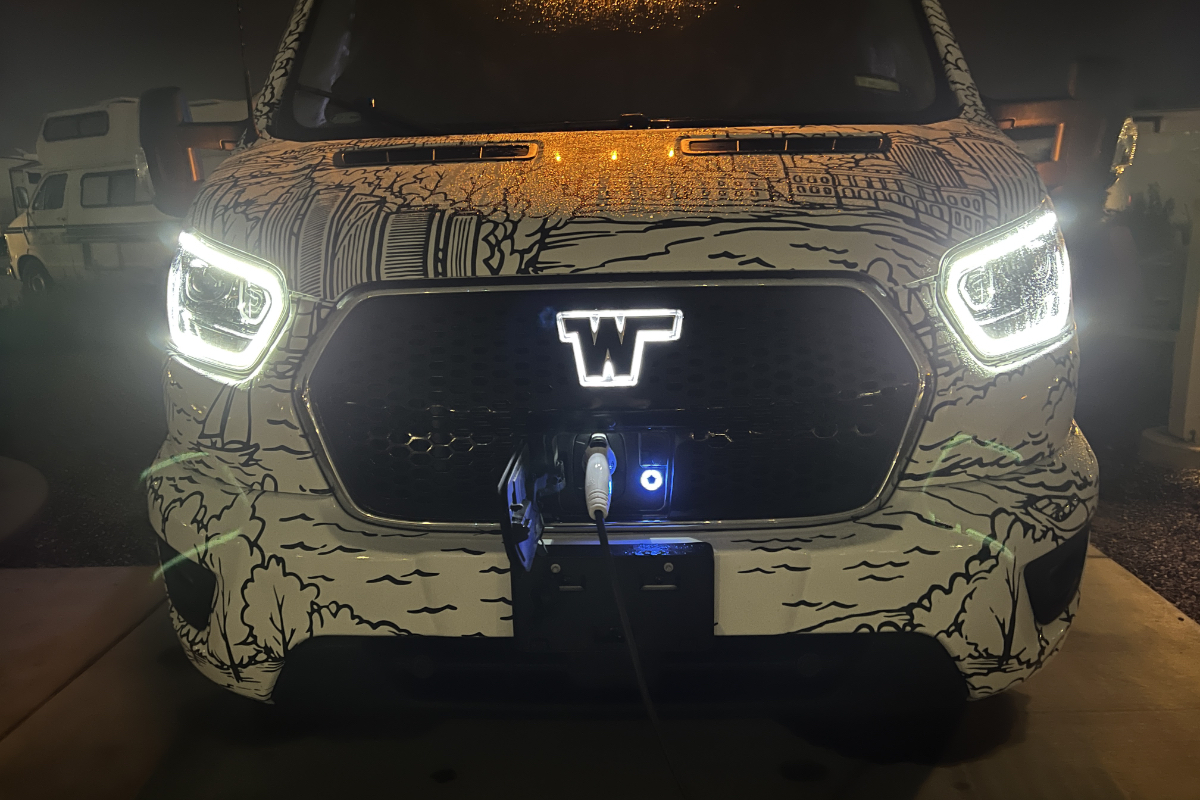
Photo Credit: Kraig Becker
When Can You Buy One?
For now, Winnebago remains tightlipped as to when a version of the eRV will be available for consumers. The company knows that there is tremendous interest in this model, however, and is moving towards a production model at a measured pace. When that will happen remains a mystery that somewhat depends on Ford continuing to develop and upgrade the E-Transit platform.
In the meantime, Winnebago continues to test its fleet of eRVs, gathering as much information and data as possible. In doing so, it is refining plans for a next-generation all-electric Class B camper van for consumers. After spending time in the current version and witnessing the company’s dedication firsthand, we’re confident it will deliver an outstanding product once it meets Winnebago’s usual lofty standards. Until then, we’ll all have to remain patient.
For more information, visit Winnebago’s website for updates on the eRV2 project and its progress toward a zero-emissions RV.
The post exclusive: Taking the Winnebago eRV2 for a Test Drive appeared first on RV.com.
Source: https://www.rv.com/rv/trending-rvs/exclusive-taking-the-winnebago-erv2-for-a-test-drive/
